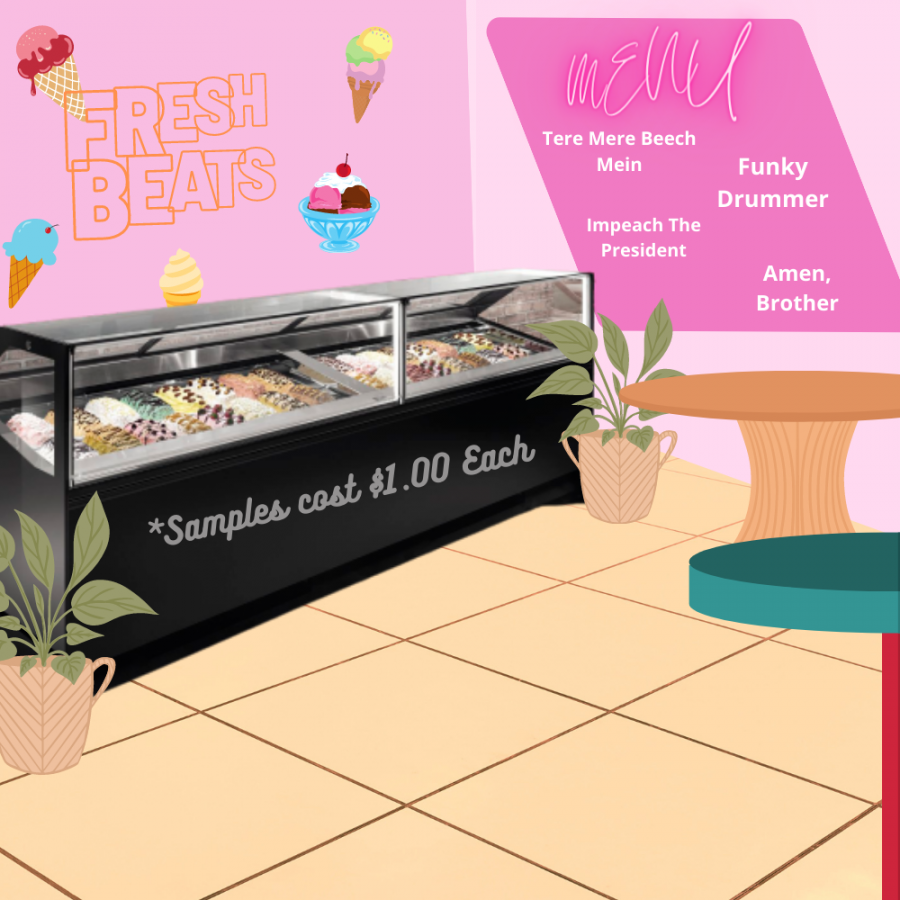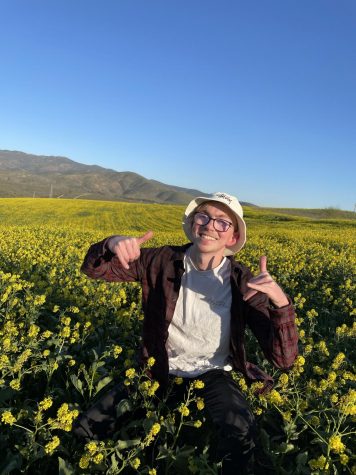Without knowing it, millions of listeners have been exposed time and time again to the ear-catching strings of “Tere Mere Beech Mein,” a Hindi love song from the smash 1981 Bollywood musical “Ek Duuje Ke Liye.” Swedish production duo Bloodshy & Avant found inspiration for their song’s daring feel throughout multiple refrains of the romantic Indian ballad, ultimately mixing and interchanging the tune to craft an unmistakable hook and giving Britney Spears an emphatic, eastern-infused comeback single.
The firecracker known as “Toxic” peaked at Number 9 on the “Billboard” Hot 100 Chart in 2004, earning Spears another career-defining track and “Ed Duuje Ke Liye” a random but well-deserved tribute.
“Toxic” is a distinctively savory hit and just one example of a producer’s ability to capture a feeling, bottle it up and produce it in a new composition, otherwise known as sampling.
Officially, sampling is defined as reusing a portion of a specific recording within or as the basis of another recording. It can mean slowing down, speeding up, looping the foundation of a beat, or simply repackaging a single moment from a song, film or speech. Anything from a subtle guitar lick to a clip from “Blades of Glory” is fair game.
To understand the true value of sampling and why it’s so underappreciated, a brief history lesson is necessary.
The original purpose of sampling was to provide a rhythm, which is why the most sampled tracks ever (with thousands of adaptations) are rich, drum-centric songs like James Brown’s “Funky Drummer,” The Honey Drippers’ “Impeach the President,” and, most prolifically, The Winstons’ “Amen, Brother.”
As the art form progressed, the items produced became even more complex. Producers transitioned from taking large chunks of a track to re-working various parts and in some cases, even multiple samples to create something completely unrecognizable. This sample breakdown of Daft Punk’s “One More Time” is one of my personal favorites when it comes to grasping the absurdity of these creations.
The art of sampling serves as the foundation of numerous genres. Sampling is responsible for many of the synthetic achievements of modern pop, house, and rave music. EDM producers, in particular, use a lot of remixes, which translates to a lot of sampling, and R&B producers sample as well. But at its core, sampling is best regarded as hip-hop’s greatest tool. The “drum break” foundation of old-school hip-hop tracks provided by innovative producers like DJ Kool Herc and Grandmaster Flash came from using multiple records at once, giving emcees a space to begin rhyming.
Nonetheless, the once impenetrable world of sampling that allowed anyone to use an unlimited cache of homages in a single recording was made much more complex by two landmark copyright disputes: The Turtles’ legal battle with De La Soul and the case Grand Upright Music, Ltd. v. Warner Bros. Records Inc.
De La Soul ended up having to pay just under $2 million for using an unlicensed 12-second portion of ‘60s rock band The Turtles’ song “You Showed Me,” a song they didn’t even write. This lawsuit outlined the previously unknown financial risk of sampling without approval and unfortunately for De La Soul, they were the first to be held liable.
As for the Warner Bros. case, it set a much more dangerous precedent. The result of Warner Bros. client Biz Markie’ “Alone Again” sampling a segment of Gilbert O’ Sullivan’s “Alone Again (Naturally)” would undoubtedly change hip-hop forever. Judge Kevin Thomas Duffy ruled in favor of the plaintiff as the legitimate copyright holder, ruling that sampling without proper attribution is equivalent to copyright infringement, implying that any uncleared samples could result in substantial financial backlash.
With this swift move, clearing samples, especially some of the more extravagant or obscure ones, turned into a difficult and expensive process that involved tracking down all the copyright owners. These owners were granted the freedom to request the entire amount of royalties on a song, making it practically impossible for producers like the Bomb Squad, known for their excessive and explosively sample-heavy production, to keep their same practice afloat. Albums from this era like the Beastie Boys’ “Paul’s Boutique,” Public Enemy’s “It Takes a Nation of Millions to Hold Us Back” and Ice Cube’s “AmeriKKKa’s Most Wanted” excellent examples of what can be accomplished with unrestricted sampling freedom.
Instead of equipping a flurry of costly samples, producers opted to scale it down to a single sample as the basis for a beat and surrounded this with additional instrumentation. This has led many producers to interpolate or fully recreate a song’s melody, but without copying and pasting the original elements. Interpolating helps get around the high prices or skeptical musicians who refuse to allow any new interpretations of their work.
Now that you’re caught up on the vital history, I would just like to mention that these restrictions didn’t stop any producer with a heartbeat from getting less creative, and if anything, it only fueled their passion more. The best of the best at sampling let their rare finds and batshit ideas bleed into their artistry, making new innovations that are still mesmerizing to this day.
Tying in with the members’ mantra as master swordsmen perfecting the Shaolin style, the Wu-Tang Clan’s all-star beatmaker RZA laid down tracks for the group’s debut with dialogue taken from Hong Kong kung-fu classic “The 36th Chamber of Shaolin.” Combined with an arsenal of soul tracks, the Wu-Tang Clan canvassed the ‘90s with their gritty, martial arts sound.
Sampling soon became such a popular habit that it spurned into multiple genres: plunderphonics and instrumental hip-hop. DJ Shadow’s 1996 album “Endtroducing…..” was the first of its kind to be entirely composed of samples. Four years later, a crew of young Australian DJs turned hours spent rummaging through $1 vinyl racks and family record collections into “Since I Left You.” It is one of the most unique albums ever, telling a luscious, vibrant story with over 3,000 expertly blended samples.
If it wasn’t clear already, the best samplers overwhelmingly come from hip-hop and when the 2000s arrived, hip-hop began to rule all.
Timbaland became the go-to producer for pop’s biggest hitmakers, the Neptunes ruled the radio airwaves with their funky, bass-heavy tunes and every artist Dr. Dre. mentored turned to platinum and gold. During this time, Just Blaze and pre-“College Dropout” Kanye West mastered the soulful beat, a talent only matched by 9th Wonder, the cornerstone of the blue-collar rap trio Little Brother.
Outside of the big-name guys getting the platinum plaques and Grammy awards, a number of producers have been making consistent gems for decades.
There’s no discussion about sampling without The Alchemist, who began his career as one-half of a rap duo with “Hawaii Five-O”’s Scott Caan, and has spent three decades cooking up enough amazing beats to fill up a phonebook. He’s had a career second-coming through collaborations with introspective rappers like Boldy James, Earl Sweatshirt and Billy Woods. If you want to see what’s been up to in 2021, listen to the powerfully transcendent “Nobles” featuring Navy Blue and Earl Sweatshirt from his new EP “This Thing of Ours,” you won’t regret it.
The list of influential hip-hop samplers goes on for days. There are the architects of the New York sound DJ Premier and Pete Rock, Japanese hip-hop legend Nujabes, and J Dilla, a man who made beats so incredible that Kanye West said they “sounded like good p-ssy.” His ability to breathe life and passion into music was most evident in his 2006 classic “Donuts,” which was released three days before his death.
Without question, the best ever is Madlib, hip-hop’s most-skilled loop digger and the maestro for lyricists like Freddie Gibbs and MF Doom as well as his own alter-ego Lord Quas. His work spans from middle eastern beat tapes to hypnotic gangster grooves, easily making him the most versatile of all the sample specialists.
I, for one, love sampling, not that you couldn’t already tell. The remixes, the beat switches and the out-of-this-world references — I love it all.
However, the thing that draws me most to sampling is the human aspect. There is no other musical process that can enter this magical realm of beauty and provide the most evocative listening experience imaginable.
Now it’s hard to argue that sampling isn’t creative or innovative in the way it’s shifted how producers can make music, but it’s always been heavily criticized. Detractors of sampling consider it as stealing since they are taking a magnifying glass to someone else’s record or a lazy process because the end result is not a completely original piece of music. There have been valid points raised about crediting copyright holders and having permission, but condemning sampling ignores one of music’s fundamental purposes: discovery.
I know every one of us can remember a handful of times when we heard something for the first time and it instantly became a favorite song. These experiences we have are attached to the notes of the music, and the same applies to producers. Sampling can transport you to a land of your choosing and allows you to literally see a producer’s foresight played out on wax. Once they work their magic, new generations become exposed to a larger collection of records as well as the creative intuition and visionary intent of whoever laid their hands on the record.
So the next time you hear a song with a sample that you recognize (or don’t) and it makes you ponder, reminisce or just inflicts you with a nostalgic rush, don’t be afraid to unleash your sense of discovery.
Ryan Hardison is a junior studying journalism. Follow him at @ryn_hrdsn.












